How a family turned tragedy into a mission to promote mental health for college athletes
— Editors note: This is Part Three in a series about mental health and college athletics. Here is Part One and Part Two.
This series contains discussion of suicide. If you or someone you know may be struggling with suicidal thoughts, call the suicide prevention hotline at 800-273-8255 .
In the vacation paradise of the Hawaiian island of Kuai, ‘Nana’s lighthouse’ brought comfort to the Hilinskis.
They threw out a lei on two visits in the year when Kym Hilinski's mother died. Her ashes were scattered in California where the family lived.
After Tyler Hilinski took his own life on Jan. 16, 2018 in Pullman, Wash., weeks after starting in a bowl game for Washington State, Kym and Mark Hilinski spread ashes of their son when they returned to what they now refer to as “Tyler and Nana’s lighthouse.” Tyler’s brothers Kelly, their oldest, and Ryan, their youngest, joined them.
“It was a rainy week and we were all so sad, so sad,” Kym Hilinski said. “I think it’s good for us. … Every time I see an ocean, I know Tyler’s there.”
Tyler’s ashes were also spread on Mt. Rainer in Washington State and in the Caribbean off the British Virgin Islands where the family traveled before Tyler’s death.
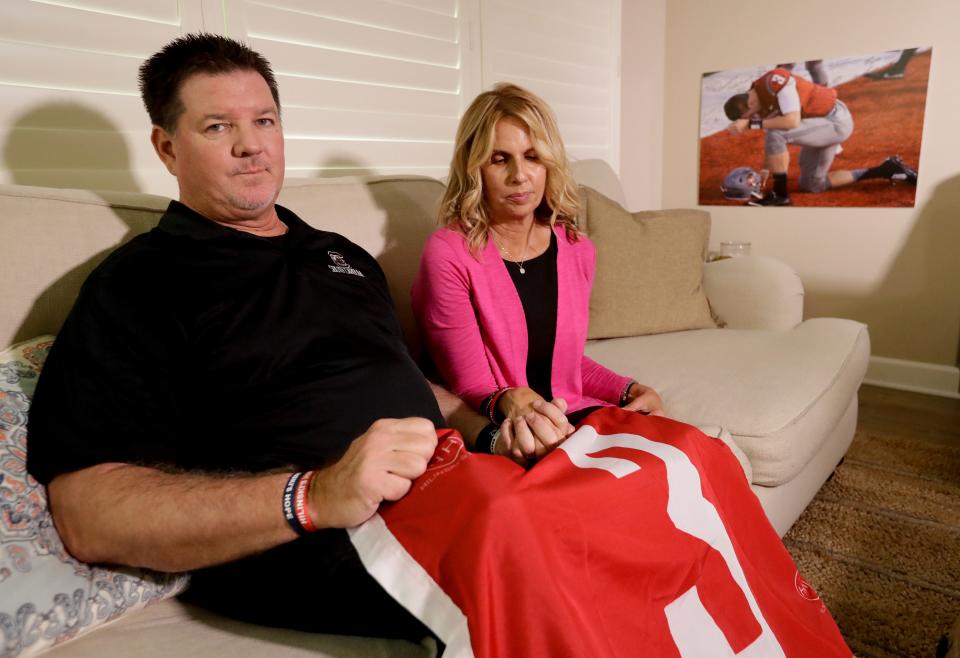
Kym and Mark Hilinski are based now in Irmo, S.C., where they moved while Ryan was playing quarterback for South Carolina under current Georgia co-defensive coordinator Will Muschamp. Ryan has since transferred to Northwestern where he has started six games. Kym and Mark live part-time in Chicago.
The Hilinskis have turned their personal tragedy into a mission to raise awareness of mental health and mental wellness.
They formed Hilinski’s Hope in March of 2018, a couple of months after Tyler, a 21-year old who had just completed his sophomore season, died by suicide. They take their ‘Tyler Talk’ to college campuses to tell his story through slides and video to engage athletes who face some of the same pressures that their son did.
“What it does is it puts a face to mental illness,” Kym said “They see a bit of themselves in it or they see a bit of their teammate or their friend.”
Georgia wore Hilinski’s Hope helmet decals for a game last season and will again for the Oct. 8 home game against Auburn during College Football Mental Health Week.
UGA is taking it a step further by making it College Athlete Mental Health Week on its campus. Co-branded T-shirts with Georgia and Hilinski's Hope were made with the message: “Mental Health Matters.”
All athletes and staff will get one. Teams competing during the week will wear the shirts for pregame warmups..
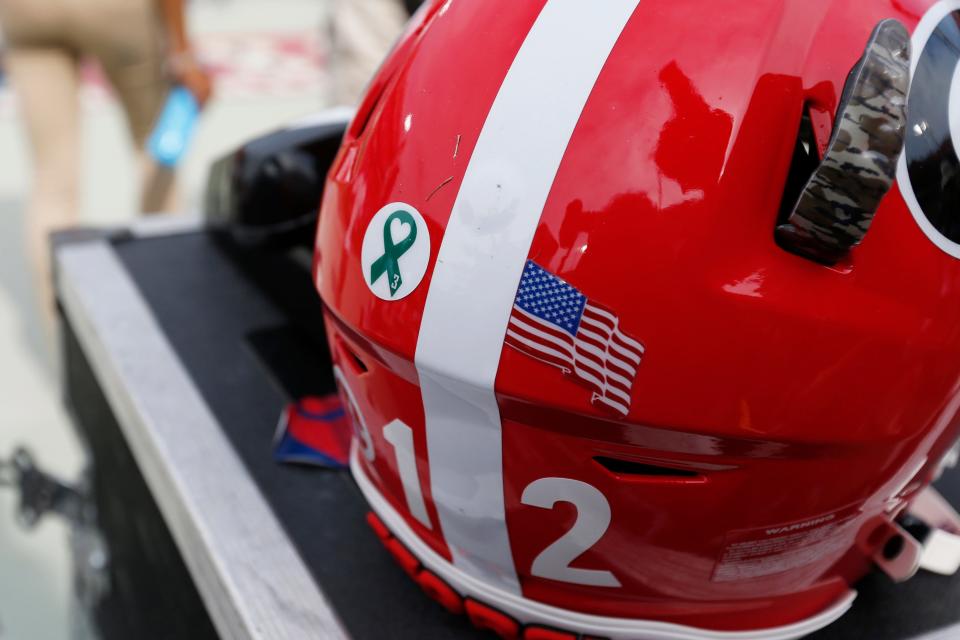
Hilinski’s Hope promotes awareness and education of mental health for athletes while aiming to reduce the stigma associated with mental illness. The nonprofit has raised more than $1 million to fund the Hilinski’s Hope Game Plan which provides tools for schools to implement changes to bring parity to mental health, offers mental health modules, a six-part online mental health and wellness program and other programming including a podcast hosted by Ole Miss sports psychologist Josie Nicholson aimed at athletes.
Schools that Hilinski’s Hope has worked with range from NAIA to Division II and III as well as junior colleges and high schools all the way up to Power Five programs. They visit athletes at some two dozen schools in a year including Berry College in Georgia in March.
They also have talked to fraternities and sororities and the ACC and Big East’s mental health summits.
Kym, a lawyer, and Mark, who started a software company, didn’t know that Tyler was struggling. He had two savings accounts. His Washington State teammates put him on their shoulders after beating Boise State in a September game.
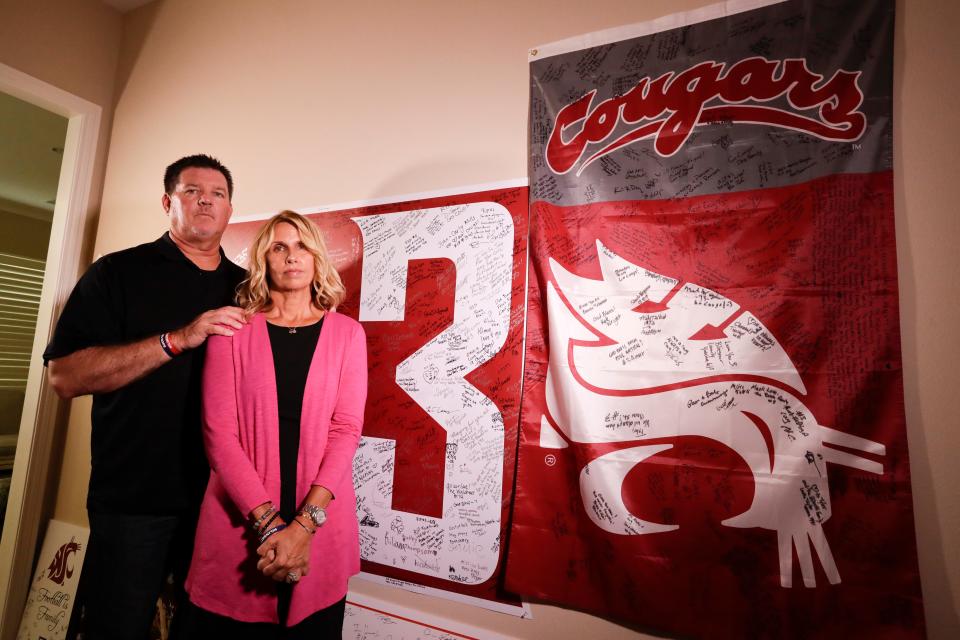
The night before he ended his life with a gun, Tyler played video games online with Ryan and Kelly.
“Then he was gone 12 hours later,” Kym said.
Tyler took an AR15 that his roommates used for clay pigeon shooting from their apartment that he was moving into. He went back to his old apartment and turned the gun on himself a few days later at about 1 p.m. His last text was to a group of quarterbacks and receivers about whether to go outside or indoors for a throwing session.
Tyler started in a 42-17 loss to Michigan State in the Dec. 28 Holiday Bowl and he joined the family for New Year’s and then a vacation in Cabo San Lucas. About a week later he killed himself back in Pullman.
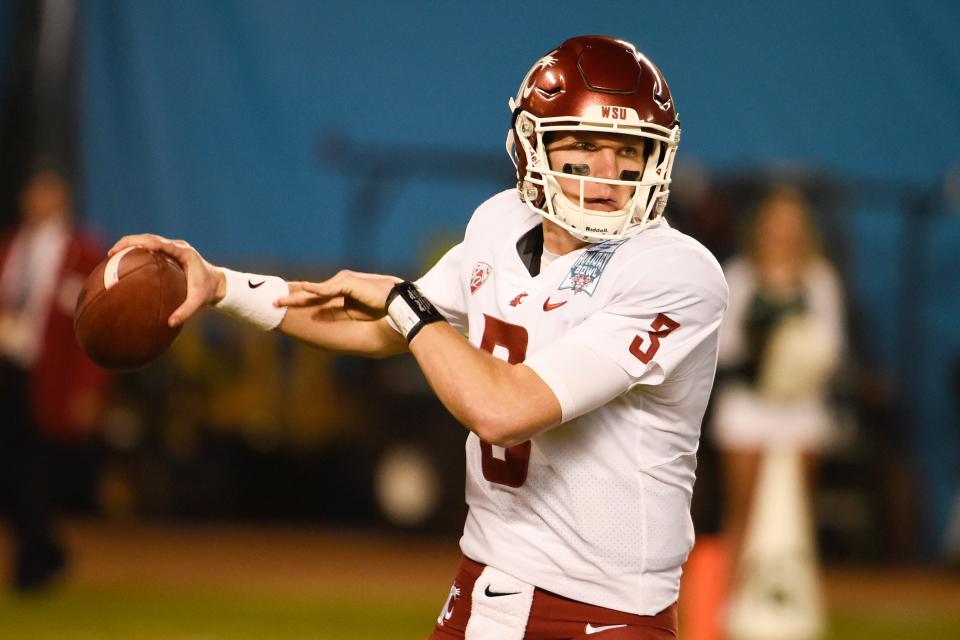
“He never shared anything with us,” Kym said. “If he was struggling and suffering in silence, how many people are? How many student-athletes out there have so much anxiety and stress that they are afraid to speak up and ask for help?”
After his death, they went back and tried to find signs. He got a parking ticket on campus. He was having a tough time in a class. His texts seemed shorter.
He had anxiety when he was 12 or 13, and he asked to drive around the block an extra time before practice.
Kym remembered texting him about buying concert tickets for an upcoming “Mom’s Weekend” at Washington State. Should she get a ticket for his girlfriend, too? Nah, he said, it’s Mom’s Weekend after all.
“When you look at that, you think he’s going to see me in a few weeks,” she said.
Sure, he started and lost the bowl game, but he was in line to be the starter the next season.
Tyler’s brain was sent to the Mayo Clinic in Florida and he was found to have had Stage 1 CTE, chronic traumatic encephalopathy. That’s the same degenerative condition from repetitive blows to the head that former Georgia and NFL cornerback Paul Oliver, who committed suicide in 2013, had. Tyler’s parents say they can’t say definitively that CTE led to the suicide.
The Hilinskis saw the stigma of mental health being chipped away when fans in SEC stadiums hold up three fingers after the third quarter to signify Tyler’s No. 3 jersey number. Ryan still wears that number.
Putting mental health alongside physical health is something the Hilinskis are trying to do.
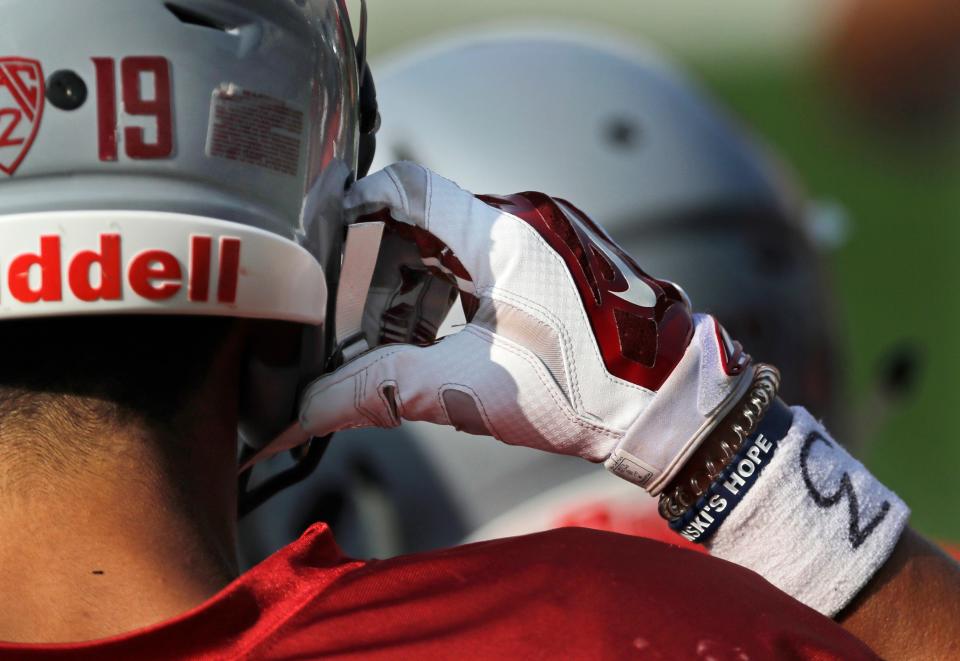
“If you think of physical health, we have Viagra commercials, we have everything you can think of,” Mark said. “For student-athletes, we have five great orthopedics that can take care of everything from elbows to toes. We have professionals that can help with mental health, but I don’t think the funding, the resources are on the same par. Sport is an orthopedic injury sport. You bend stuff, you twist stuff, you break stuff. We get that.”
He said mental health services should be viewed as also helping the athlete the same way. “I’m not sure it is,” he said. “It’s certainly not everywhere the same way and that’s what we’re looking to change.”
Mark said athletes who could benefit by turning to someone about their mental health may worry about how it would affect their standing on the team.
“Am I going to lose my job? Am I going to stick out? Am I going to be ostracized,” he said. “We’re trying to help that group.”
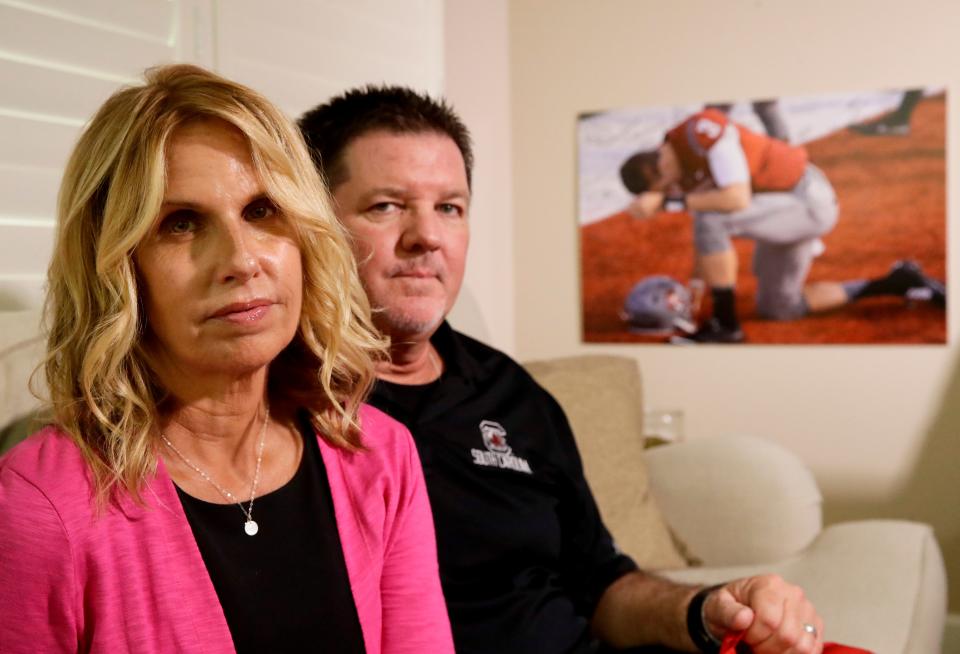
The Hilinskis say the pandemic has shined a spotlight on mental health but more athletes struggled with uncertainty and changes it brought.
They were scheduled to speak at UGA but those plans changed due to the pandemic. A new date is being worked on in the next year.
“They do a fantastic presentation,” said Dr. Dylan Firsick, Georgia’s assistant athletic director for mental health and performance who saw the Hilinskis address a sports psychologist annual conference. “Really the crux of their talk being sometimes you have no idea. I can keep everything on the outside, can look like things are fine and that's why it so important to reach out to each other if you see something. We can't be everywhere but to have a department where everybody has basic mental health training to be able to see red flags and notice things and refer to us or check in with the athletes.”
Kym returned to Kauai in May during Mental Health Awareness Month and ran one of three marathons she took part in that month. She’s visited that lighthouse multiple times since Tyler’s death.
Hilinski’s Hope has distributed hundreds of thousands of wrist bands that have been mailed all over the world. Inside is a suicide hotline number.
“Our promise,” Kym said, “is to keep telling Tyler’s story and try to help other people.”
This article originally appeared on Athens Banner-Herald: How the life of a Washington State QB lives on through Hilinski's Hope

